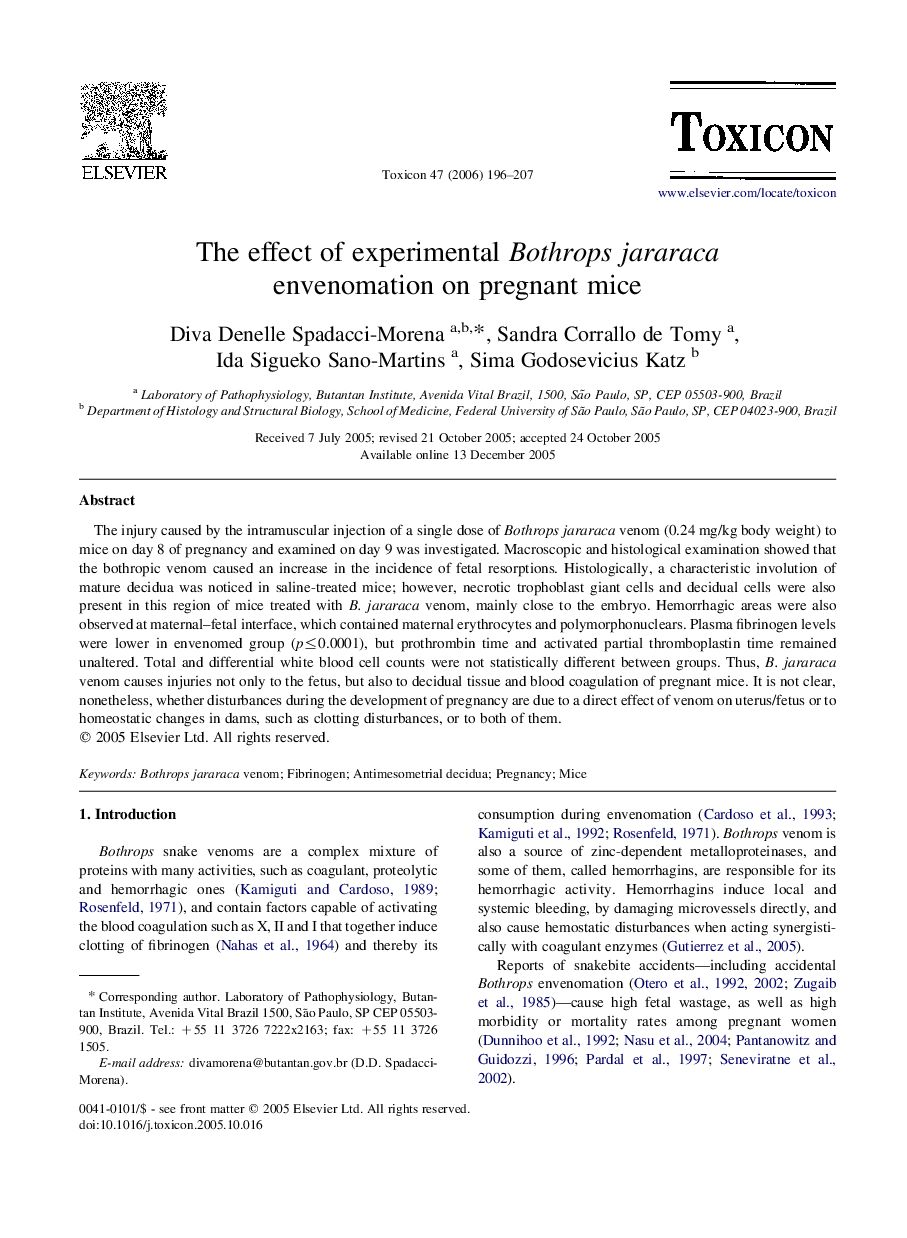| Article ID | Journal | Published Year | Pages | File Type |
|---|---|---|---|---|
| 2065966 | Toxicon | 2006 | 12 Pages |
The injury caused by the intramuscular injection of a single dose of Bothrops jararaca venom (0.24 mg/kg body weight) to mice on day 8 of pregnancy and examined on day 9 was investigated. Macroscopic and histological examination showed that the bothropic venom caused an increase in the incidence of fetal resorptions. Histologically, a characteristic involution of mature decidua was noticed in saline-treated mice; however, necrotic trophoblast giant cells and decidual cells were also present in this region of mice treated with B. jararaca venom, mainly close to the embryo. Hemorrhagic areas were also observed at maternal–fetal interface, which contained maternal erythrocytes and polymorphonuclears. Plasma fibrinogen levels were lower in envenomed group (p≤0.0001), but prothrombin time and activated partial thromboplastin time remained unaltered. Total and differential white blood cell counts were not statistically different between groups. Thus, B. jararaca venom causes injuries not only to the fetus, but also to decidual tissue and blood coagulation of pregnant mice. It is not clear, nonetheless, whether disturbances during the development of pregnancy are due to a direct effect of venom on uterus/fetus or to homeostatic changes in dams, such as clotting disturbances, or to both of them.
